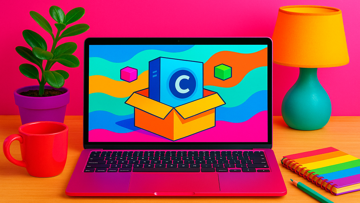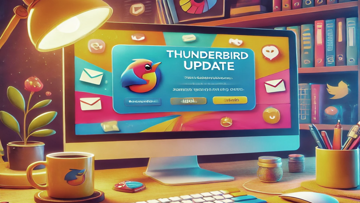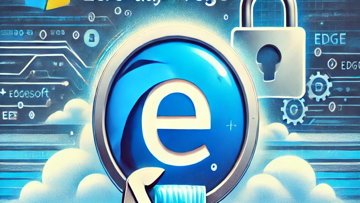Overview of Notes to Exchange 2010 Migration by NSF to PST
The migration from IBM Notes (formerly Lotus Notes) to Microsoft Exchange 2010 is a critical process for organizations looking to transition their email systems. This review focuses on the steps involved in migrating NSF (Notes Storage Facility) files to PST (Personal Storage Table) format, which is supported by Exchange. The migration process requires careful planning and execution to ensure that emails, contacts, calendars, and other essential data are transferred seamlessly.
Understanding NSF and PST Formats
Before diving into the migration process, it's important to understand the two file formats involved:
- NSF (Notes Storage Facility): The file format used by IBM Notes to store documents, emails, and other information. It holds all data within the Notes environment.
- PST (Personal Storage Table): A file format created by Microsoft for storing copies of messages, calendar events, tasks, notes, and other items within Microsoft Outlook.
Reasons for Migrating from IBM Notes to Exchange 2010
Organizations consider migrating from IBM Notes to Exchange for several reasons:
- User Interface: Microsoft Outlook offers a more intuitive and user-friendly interface than IBM Notes.
- Integration: Exchange provides better integration with other Microsoft services and applications.
- Collaboration: Exchange 2010 enhances collaboration features with shared calendars, task management, and team collaboration tools.
- Support and Updates: As Microsoft’s products receive regular updates, organizations often prefer an environment that guarantees ongoing support.
Planning the Migration Process
A successful migration relies heavily on effective planning. Below are the key steps an organization should take:
- Assessment: Evaluate the existing NSF files. Assess the size, number of users, and individual data requirements.
- Select Tools: Choose a reliable third-party tool or service that can convert NSF files to PST format. Some widely recognized options include Stellar Converter for NSF, Kernel for Lotus Notes to Outlook, and SysTools NSF to PST Converter.
- Define Timeframe: Establish a timeframe for the migration process to minimize downtime during transition.
- User Communication: Inform all users about the migration plan, expected changes, and how they will be affected during the process.
Migrating NSF Files to PST Format
The actual migration process typically consists of several phases:
1. Installation of Migration Tool
The first step is to install the chosen third-party migration tool on a system that has access to both the NSF files and the target Exchange server.
2. Loading NSF files
The tool will provide an option to browse and load NSF files. This step may include selecting individual mailboxes or folders for migration.
3. Converting NSF to PST
Once the files are loaded, use the tool’s features to start the conversion process. Most tools will allow for batch processing if multiple users are involved.
4. Previewing Data
Some migration tools offer a preview of converted data. This feature allows administrators to check data integrity before proceeding with final export.
5. Exporting to PST Format
The conversion tool will export converted data into PST format suitable for Microsoft Outlook or Exchange 2010. This will typically generate individual PST files for each user or a collective file based on preferences.
6. Importing PST into Exchange 2010
The final step involves importing the exported PST files into Exchange 2010 using Microsoft's built-in Import Wizard in Outlook or through PowerShell commands in Exchange Management Shell.
Post-Migration Tasks
Once migration is complete, administrators should undertake a series of follow-up actions:
- User Verification: Ensure that all users have access to their migrated emails and other data without issues.
- Training: Provide users with necessary training on Microsoft Outlook if they were previously using IBM Notes.
- Data Integrity Check: Perform checks on data integrity after importation; look out for missing emails or discrepancies in calendars and contacts.
- Create Backup: Regularly back up migrated data in Exchange 2010 as part of disaster recovery plans.
Troubleshooting Common Issues
No migration process is free from challenges. Common issues include:
- Error Messages during Conversion: Ensure that the migration tool is compatible with your version of notes and has sufficient permissions.
- Migrated Data Missing: Verify proper selection of folders during initial loading of NSF files into the converter tool.
- PST File Size Limitations: Be aware of Outlook’s PST file size limitations as large mailboxes may need segmented exports.
The Importance of Documentation in Migration Projects
An often overlooked aspect of software migrations is thorough documentation throughout each phase of the process. Keeping detailed records can help identify issues quickly should they arise and streamline potential follow-up migrations or adjustments in the future.
Status Monitoring After Migration
Editions and updates for Outlook and Exchange should be monitored regularly post-migration. Ensure compliance with security protocols while users acclimatize to their new email environment. This stage can also serve as an opportunity to gather user feedback regarding their experiences with the new system and identify areas where additional support or training may be needed.
概述
Notes to Exchange 2010 Migration 是在由NSF to PST開發類別 System Utilities Shareware 軟體。
最新版本是 Notes to Exchange 2010 Migration 的 9.3 2016/08/20 上釋放。 它最初被添加到我們的資料庫 2010/06/20 上。
Notes to Exchange 2010 Migration 在下列作業系統上運行: Windows。 下載檔案的大小 21MB。
Notes to Exchange 2010 Migration 已不被評為由我們使用者尚未。
最近的更新
BombTag 5.6.4.28806
BombTag is a fast-paced multiplayer action game created by David Schneider. It features both local and online play, allowing players to compete against each other or work together to achieve a common goal.最新動向
評測
|
Calibre
使用 Calibre 輕鬆組織和管理您的電子書庫。 |
|
|
Ubisoft Connect
Ubisoft Connect:使用 Ubisoft 的官方平台增強您的遊戲體驗 |
|
|
MiniTool Partition Wizard Free
使用 MiniTool Partition Wizard Free 輕鬆管理您的磁碟分區 |
|
|
AOMEI Backupper
AOMEI Backupper:可靠的備份和恢復解決方案 |
|
|
EASEUS Data Recovery Wizard
使用EASEUS資料恢復精靈輕鬆恢復丟失的數據。 |
|
|
FastStone Image Viewer
FastStone Image Viewer:一款多功能且快速的圖像查看軟體。 |
|
UpdateStar Premium Edition
UpdateStar Premium Edition:管理軟體更新的實用工具 UpdateStar Premium Edition 是一種軟體管理工具,旨在通過確保您的程式是最新的,説明您的 PC 保持最佳狀態。它可以處理從掃描過時軟體到提供個人化推薦,甚至備份您的配置以便在需要時恢復設置的所有事情。仔細查看自動更新功能 : 此功能會自動掃描您的電腦以查找過時的程式,只需按下即可説明您更新它們。無需再尋找每個應用程式的最新版本。軟體資料庫: UpdateStar … |
|
|
Microsoft Visual C++ 2015 Redistributable Package
Microsoft Visual C++ 2015 Redistributable Package 是 Microsoft 创建的軟體元件。它為使用者提供了運行使用 Visual Studio 2015 創建的應用程式所需的運行時元件。此可再發行元件組件組件旨在使開發人員能夠更輕鬆地在系統上部署其應用程式,而不必擔心是否已安裝所需的運行時元件。該包包括 Microsoft 基礎類 (MFC)、Visual C++ CRT 和標準 C++ 等庫。如果沒有這些庫,使用 … |
|
|
Microsoft Edge
Microsoft Edge是由Microsoft開發的Web瀏覽器,旨在成為市場上其他流行瀏覽器的輕量級和快速替代品。Microsoft Edge 於 2015 年推出,取代 Internet Explorer 成為 Windows 操作系統上的預設瀏覽器。 Microsoft Edge的主要功能之一是它與Microsoft的虛擬助手Cortana的集成。這允許使用者在不離開瀏覽器視窗的情況下執行搜索、設置提醒並獲取問題的答案。 在性能方面,Microsoft Edge … |
|
|
Google Chrome
Chrome 是 Google 開發的網路瀏覽器。它的特點是速度快,功能多。 |
|
|
Microsoft Visual C++ 2010 Redistributable
評論:Microsoft Visual C++ 2010 Redistributable by Microsoft Microsoft Visual C++ 2010 Redistributable 是由 Microsoft 開發的軟體應用程式,它為使用 Microsoft Visual C++ 2010 構建的程式提供運行時元件。在未安裝 Visual C++ 2010 的電腦上執行使用此版本的 Visual … |
|
|
Microsoft Update Health Tools
Microsoft Update Health Tools 是由 Microsoft Corporation 開發的軟體應用程式,可説明使用者解決和修復與設備上的 Windows Update 相關的問題。作為 Microsoft 對改善 Windows 更新體驗的持續承諾的一部分,更新運行狀況工具旨在簡化診斷和解決更新相關問題的過程。 Microsoft 更新運行狀況工具的一個關鍵功能是它能夠檢測可能阻止 Windows … |





